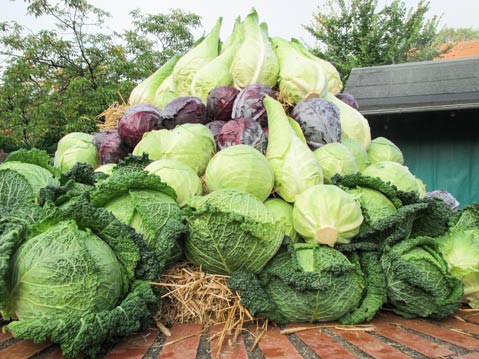Maximize Yield, Minimize Space
How to Get the Most Harvest from the Least Plot Size

There are many factors affecting gardening successfully and, most importantly these days, efficiently. For most, water is scarce, but the desire to grow a garden, however small, is still strong. Just how much water to budget for the garden will determine how big the garden can be and, thus, how many plants it can support. The best way to tackle this conundrum is with a bit of math. Don’t worry, it’s easy. Read on.
The first question to answer is just how much can one plant: tomato, squash, bean, whatever, produce in a season? Of course, the yield will vary with all the usual unknowns, like sunshine (will it be foggy this summer?), soil fertility, pest invasions, and many more. It may be useful to keep a journal to track just what the household can consume and not rebel (not zucchini again!). One simple list is available at harvesttotable.com (there appears to be a book, too, if you want a hard copy to consult). There are others such as the helpful table at Growing Vegetable Gardens (growingvegetablegardens.com). Many seed packets may also indicate this type of information. And Internet searches will reveal much more. Again, experience will make the difference, and each year can bring a finer-tuned garden plan.
To grow the chosen few plants well, but in the minimum space they require, is just another matter of planning. The key is to place plants in relation to each other that allows maximum space for their mature size. When plants are allowed adequate root space and don’t have to compete above ground for light and air, they will thrive. Well-spaced plants require less irrigation and fertilizer and will consistently produce a premium crop.
Luckily for buyers, most seed packets and plant labels contain all the information needed to provide adequate advice on plant spacing. The trick is to imagine a plot of garden that is as closely packed as the plants require without wasting precious space anywhere. A grid will be much more efficient than rows with lost space between, for example.
If the label says plants should be spaced six inches apart, divide the available plot into a grid that staggers those plants to take advantage of the space between plants in one row with plants offset in the next row. Honeybees are masters of maximizing this sort of spatial arrangement, so think honeycomb if that helps. There are online resources to help you visualize this and even a nifty calculator to do the math.
Check out mysquarefootgarden.net for great diagrams on gardens large and small. GardenWeb also has some lists of common veggies and herbs with suggestions for ideal placement. Go to faq.gardenweb.com. The Landscape Calculator at landscapecalculator.com also has plant spacing information with a simple calculator that produces desired results simply by plugging in information specific to the plant in question. This site also can help with calculating how much mulch to buy or acquire for a certain size plot, including a cover of stones. Much more, that may or may not be useful, is included such as the arcane information (at least for most Southern California gardeners) about how many square feet or acres your mower will mow given its width and speed!
Efficiency and water conservation are on everyone’s minds. Here are some tools to use in the garden to maximize those efforts.



